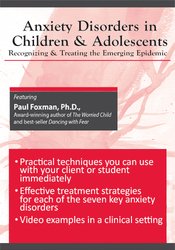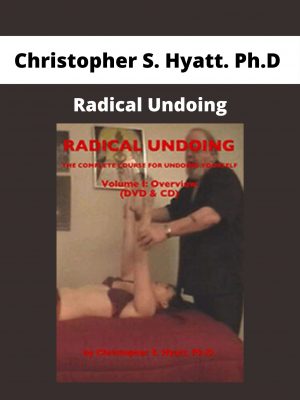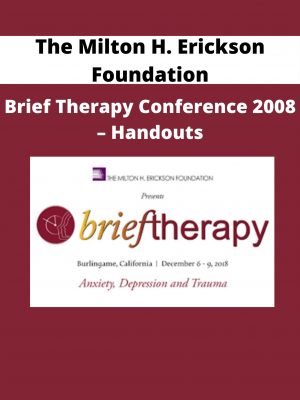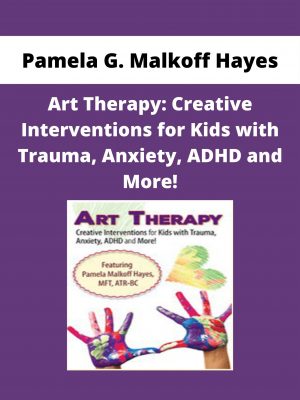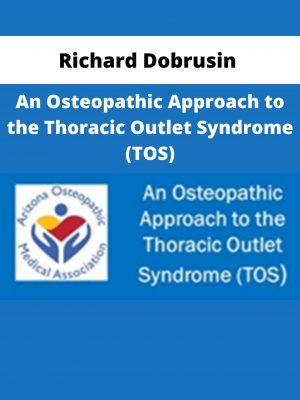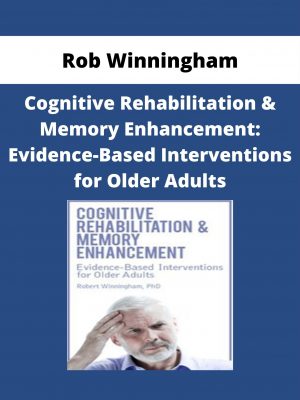Paul Foxman – Anxiety Disorders in Children and Adolescents
$219 Original price was: $219.$62Current price is: $62.
Shopping Instructions:
- DISCOUNT 15% : SHOP15
- Product Delivery: Within 1 – 12 hours after purchase.
Anxiety disorders are now recognized as the most common emotional problem in 10 out of 17 countries surveyed by the World Health Organization, including the United States.
Paul Foxman – Anxiety Disorders in Children and Adolescents
Nature and Causes of Anxiety
- How anxiety develops in children
- Three ingredients in all anxiety disorders
- The ”anxiety personality” – assets and liabilities
Seven Key Anxiety Disorders
- Separation anxiety disorder
- Panic disorder
- Overanxious disorder
- Obsessive-compulsive disorder
- Social anxiety disorder
- Phobias
- Post-traumatic stress disorder
Co-Occurring Disorders
- Depression
- ADHD
- Learning disabilities
- Selective mutism
Therapeutic Approaches
- Cognitive-behavioral
- Biological
- Mindfulness
- Expressive Arts
- Family Systems Approaches
Interventions and Self-Regulation Strategies
- The Floating Technique for panic anxiety
- Exposure and Response Prevention (ERP) for OCD
- Mindfulness for worry
- Solution Focused Intervention for worry
- Group Therapy guidelines for social anxiety
- Visualization Desensitization for separation anxiety
- Three Question Technique for parents struggling with child separation anxiety
- Three Step Technique for managing children’s stress
- Yoga games and breathing techniques for relaxation training
- LifeSkills Program for generalized anxiety
- Virtual Reality approach for phobias
- Baby Buddhas meditations for anxious preschoolers
Limitations of Research and Potential Risks
- Consider scope of practice
- Empirical and anecdotal evidence
- No “one size fits all” for any modality of anxiety treatment
Would you like to receive Paul Foxman – Anxiety Disorders in Children and Adolescents ?
Description:
Anxiety disorders are now recognized as the most common emotional problem in 10 out of 17 countries surveyed by the World Health Organization, including the United States. The increasing rate of stress and trauma to children, which includes divorce, family breakdown, violence in society, the media, and a failing school system, has produced a “shell shocked” generation suffering from anxiety in many cases. The challenge for clinicians is to recognize anxiety in children and help them cope.
Dr. Paul Foxman will present a template for how and why anxiety develops in children and adolescents. He will present practical treatment strategies that can be applied immediately. The seven key anxiety disorders along with case examples to be addressed include:
- Separation anxiety disorder
- Panic disorder
- Overanxious disorder
- Obsessive-compulsive disorder
- Social anxiety disorder
- Phobias
- Post-traumatic stress disorder
Other co-occurring disorders (e.g. behavior problems, medical conditions, depression, ADHD, learning disabilities, selective mutism) will also be discussed. Emphasis will be on creative interventions involving insight-oriented, cognitive-behavioral, biological, mindfulness, expressive arts and family systems approaches.
Related products
HEALTH & MEDICAL
HEALTH & MEDICAL
HEALTH & MEDICAL
Bernadette Giorgi – Attitude Ballet & Pilates Fusion – Just B Method
HEALTH & MEDICAL
HEALTH & MEDICAL
HEALTH & MEDICAL



